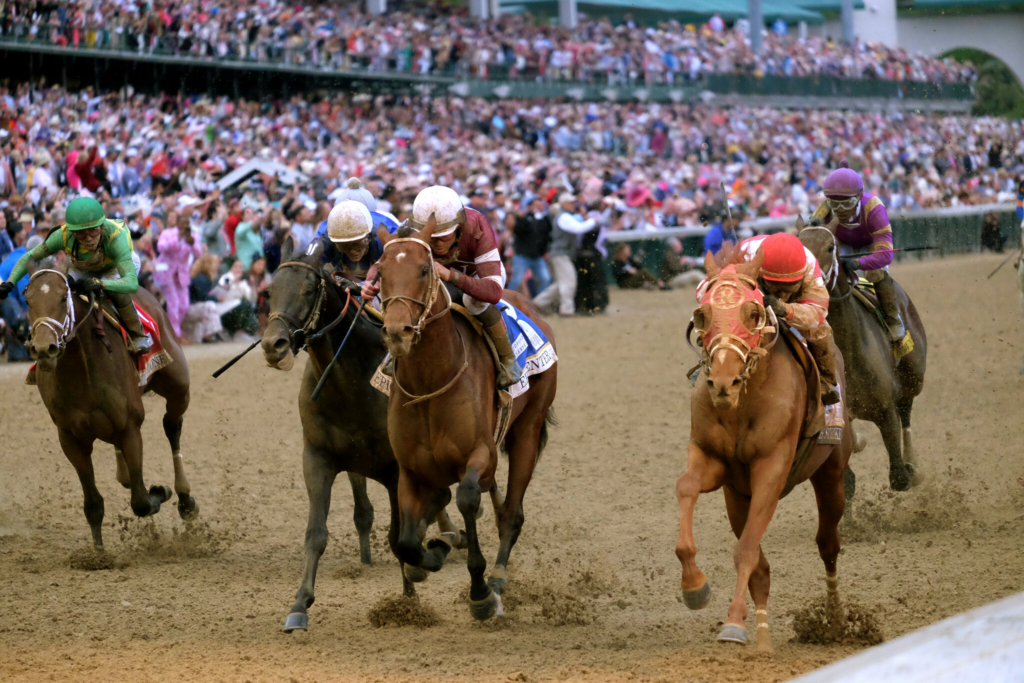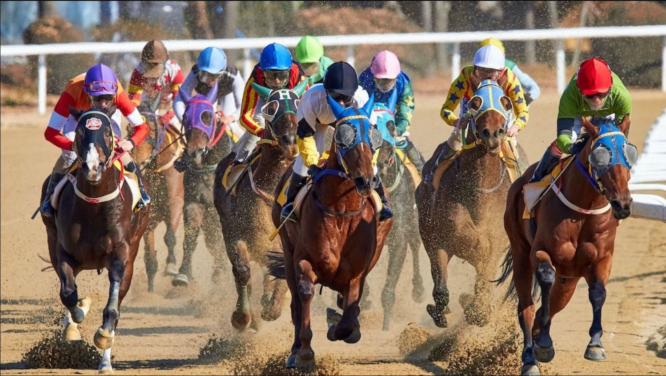Sports’ greatest two minutes. Roses Run. Churchill Downs will host the 149th Kentucky Derby on May 6. Post time is 6:57 p.m. EST, but NBC will start race coverage at noon with features, interviews, and other races before the big race and post-race wrap-up until 7:30.
Derby fans adore racing and sports. 155,000 people attend the Kentucky Derby, paying from $70 for standing room tickets to $375 to $1,000 for grandstand and club seats, while 16 million more watch it on NBC. The race sometimes draws 20 million viewers.
The first jewel in thoroughbred racing’s Triple Crown is more than simply stunning 3-year-old horses and elite jockeys and trainers competing for the winner’s portion of $1.86 million of the $3 million payout distributed among the top five finishers. It’s the history, the iconic stretch duels, the race strategy, the singing of “My Old Kentucky Home,” the winner’s garland of roses, and the mint juleps ($15 ordinary, $2,500 in a specially etched Kentucky Derby glass). It’s also grandstand women’s $1,000-plus headgear.
It features rigorously trained 1,100-lb. horses on tiny ankles carrying 126 pounds, including their jockey, traveling the standard 11/4-mile distance at up to 40 mph.
Exciting occasion. The horses are excited, and the winner usually retires to stud later in the year or the next year, increasing their stud fees and syndication payments significantly. This major stage excites the jockeys. Trainers and supporters are enthusiastic.
Bets make the race more thrilling for many viewers. Many just watch or root for a horse, but others gamble. Last year, the race was bet $274 million legally. Bet, but don’t win. Many factors affect race results.
First, these 20 3-year-olds are the best in the world and can win the race. A racing favorite doesn’t necessarily win. Like favorites? Favorites win 30% of all thoroughbred races, yet since 1980, only 19% of Derby favorites have won. Like post-position numbers? Gates 8 and 10 and post 5 have won nine races each.

Racing is risky, so bet. Consider the elements that determine the best horse to win. These are just 13 of many.
Field quality: Most of these horses have won prep races and can win.
Post position—Some horses break swiftly and enjoy the rail, while others on the outside have to run farther. Two horses won from post 20 and one from 19. 17-post horses have never won.
Is the horse happy today? Jockey OK?
Training and conditioning – Most horseplayers like to watch a horse that is improving and has raced two to three weeks ago in good condition. Horseplayers dislike horses that haven’t competed in months and are entering the race “on works alone.” Some trainers gallop their horses hard and fast a week before the event, believing it makes them better conditioned.
Does the track suit the horse? Mud and rough dirt bother certain horses.
Is the trainer’s strategy good?
Was your horse’s gate breach good? Gates can lose races.

Is another horse racing its life?
Is the race growing slowly, favoring frontrunners, or too quickly, favoring closers who fly down the stretch after holding off the pace? Was your horse closed off or “clean”? Was he bumped or did the jockey take him inside, outside, change reins, or alter stride?
Did the jockey notice and hit the hole when your horse was blocked?
Could your horse finish the race if it had to maneuver?Will this route and distance help your horse?
Does the audience or battle give your horse adrenalin? Years ago, horses like Cougar II liked the crowd cheering. Secretariat, the unbeatable horse, did too. Some horses enjoy a stretch duel.
Bet and enjoy the race. Expect to lose, but be in it to win. “Ya gotta spend a buck to make a buck” in horse racing.

